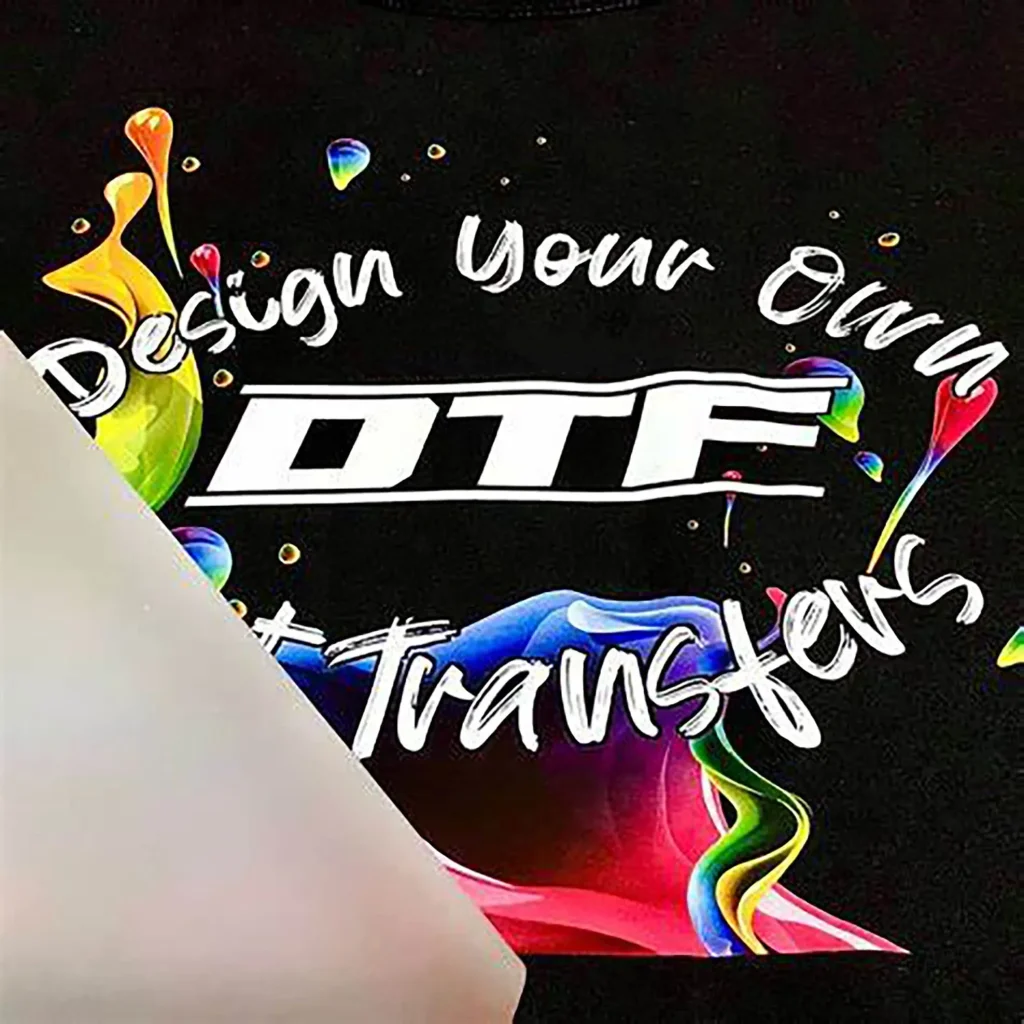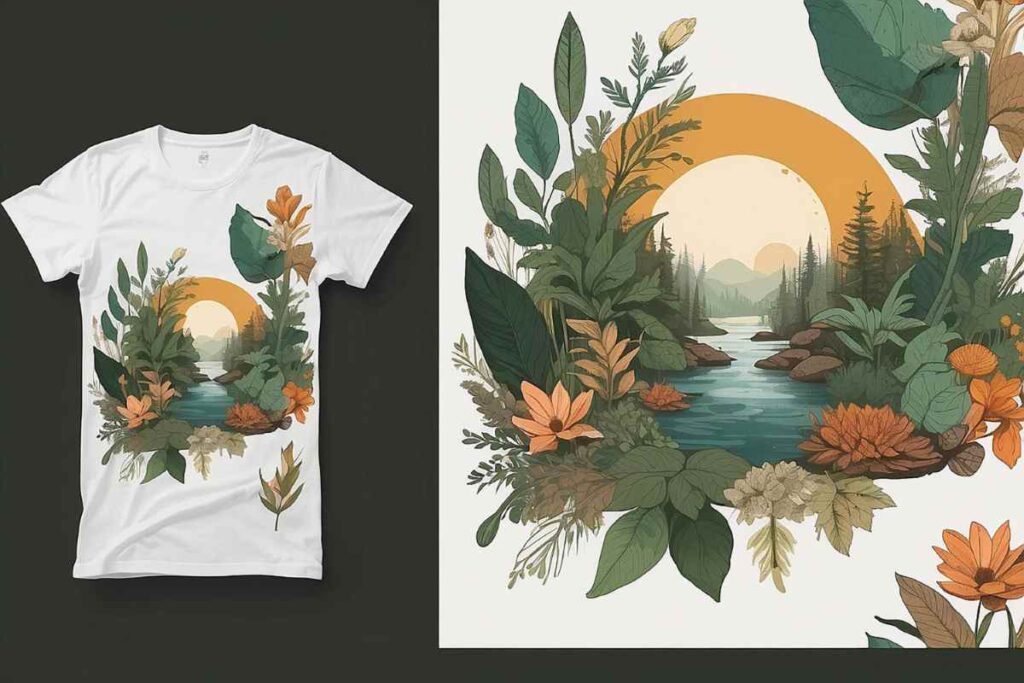DTF Transfers, or Direct-to-Film printing, have emerged as a revolutionary technique in the world of custom apparel printing. By utilizing advanced DTF transfer technology, businesses can create striking designs that adhere to various fabric types, thereby catering to a wide range of customer preferences. This method not only provides vibrant, high-quality prints but also offers significant benefits in terms of versatility and efficiency. As the demand for personalized fashion continues to rise, understanding the advantages of DTF printing is indispensable for those looking to stay competitive in the ever-evolving apparel market. In this article, we will explore the numerous benefits of DTF Transfers and how they represent a significant advancement in apparel printing innovations.
Direct-to-Film (DTF) transfers represent a cutting-edge method of transferring images onto textiles, utilizing specialized films and inks to achieve impressive results. This innovative approach allows for printing on diverse materials, making it ideal for custom clothing solutions. The technology stands out by delivering exceptional color vibrancy and detailed designs, ensuring that end products are both visually appealing and durable. As DTF printing gains traction, it brings forth numerous advantages that appeal to businesses interested in enhancing their product offerings and operational efficiency. Through this discussion, we aim to shed light on key aspects of DTF transfer technology and its transformative impact on garment printing.
Understanding Direct-to-Film Transfers
Direct-to-Film (DTF) transfers have revolutionized the custom apparel printing landscape by providing a unique method for transferring designs onto various fabrics. This innovative technology utilizes specialized films and inks that allow for high-quality prints on diverse materials, ensuring that businesses can cater to a wide range of customer preferences. The flexibility of DTF printing means that it can seamlessly adapt to materials such as cotton, polyester, and a blend of fabrics, each yielding stunning results with vibrant color reproduction.
One of the key advantages of DTF transfers lies in their ability to produce intricate and detailed designs, even on dark garments. Unlike traditional printing methods that often struggle with color vibrancy on black or deep shades, DTF technology excels, enabling designers to deliver impactful visuals that capture consumer attention. This capability is critical in an industry where personalization and unique apparel options are increasingly in demand, making DTF transfers an essential tool for any custom printing business.
Advantages of DTF Printing for Custom Apparel
The benefits of DTF transfers go beyond just versatility; they include exceptional color vibrancy and cost-efficiency that can significantly impact a company’s bottom line. With DTF printing, businesses can offer customized apparel that stands out in competitive markets thanks to the innovative inks that guarantee striking colors and longevity. Customers are drawn to products that reflect their style, and the capability to produce bold, eye-catching prints is what can make or break a sale in the crowded apparel market.
Moreover, DTF printing presents a cost-effective solution for businesses by minimizing the initial investment required for production. The reduced setup costs associated with DTF technology allow small to medium-sized enterprises to explore unique designs without an overwhelming financial burden. This economic advantage encourages experimentation and innovation, empowering businesses to tailor their offerings to customer needs and preferences while maintaining a healthy profit margin.
Market Trends Driving DTF Technology Adoption
As consumer demand for personalized apparel continues to rise, the DTF printing market is witnessing significant growth. The inclination toward unique, customized clothing solutions is driving more companies to explore DTF technology as a viable printing method. Market research indicates that as businesses become aware of the possibilities presented by DTF, they are investing more into this technology to meet evolving consumer expectations and to stand out in a saturated market.
Furthermore, the continuous advancement of DTF technology is not only enhancing its application in the custom apparel sector, but it also positions it favorably against traditional methods. Improved speed and quality due to innovations in ink formulations and printing techniques mean that high-quality prints can be achieved quickly, catering to the fast-paced demands of modern consumers. Companies that adapt and stay ahead of these trends will find themselves at a competitive advantage.
Essential Best Practices for DTF Printing
To ensure the successful implementation of DTF transfers, businesses should adhere to best practices that maximize their potential. Investing in high-quality equipment, including specialized printers and heat presses, is fundamental for consistency and quality in output. Proper equipment not only affects print adherence, eliminating issues like peeling or fading, but also enhances the overall production workflow, allowing for more efficient operations.
Another crucial factor in optimizing DTF printing is the design process. Utilizing sophisticated design software that accommodates the nuances of DTF transfers ensures sharp and well-calibrated graphics. Additionally, conducting material testing helps businesses understand how different fabrics interact with DTF transfers, allowing them to refine processes and select the best materials for desired outcomes. Educating consumers on post-care instructions can also significantly extend the life of the prints, thereby increasing customer satisfaction and retention.
Innovations in DTF Technology
The evolution of DTF printing technology has ushered in a new era of apparel printing innovations, ensuring that businesses can keep pace with industry changes and consumer demands. The research and development of specialized DTF inks that enhance adhesion and washability are critical advancements that drastically improve the quality and durability of prints. These innovations lead to longer-lasting apparel, which is a key selling point for customers looking for value in their purchases.
Moreover, as companies experiment with new printing techniques, the introduction of faster print speeds and improved equipment capabilities has made DTF a more attractive option for businesses of all sizes. Embracing these innovations allows businesses to scale their operations and produce high volumes of custom apparel efficiently. As DTF technology continues to develop, those who stay informed and adaptable will be rewarded with enhanced production capabilities and satisfied customers.
Leveraging DTF Printing for Competitive Advantage
In the crowded marketplace of custom apparel, leveraging the benefits of DTF printing can provide a significant competitive edge. By utilizing DTF transfers, businesses can cater to a diverse audience by producing vibrant prints on a variety of materials, thus meeting customer demands for personalization and uniqueness. This capability not only facilitates wider product offerings but also increases customer engagement by delivering tailor-made solutions that resonate with individual preferences.
Furthermore, the cost-effectiveness of DTF printing allows businesses to conduct smaller print runs with less financial risk. This agility enables companies to test new designs and trends without committing substantial resources upfront. In an industry that thrives on creativity and innovation, the ability to quickly pivot and adapt to consumer demands can help businesses maintain relevance and thrive amid growing competition.
Frequently Asked Questions
What are DTF transfers and how do they work?
DTF transfers, or Direct-to-Film transfers, are a revolutionary printing method that allows designs to be printed onto film and then transferred onto fabric using heat. This technology is highly versatile, capable of printing on various materials like cotton and polyester, making it a popular choice for custom apparel printing.
What are the key benefits of using DTF printing for custom apparel?
The benefits of DTF printing include versatility across multiple fabric types, vibrant color reproduction that enhances designs, cost-effectiveness for smaller print runs, and ease of use that streamlines production workflows. These features make DTF transfers an attractive option for businesses in the custom apparel market.
How does DTF transfer technology compare to traditional printing methods?
DTF transfer technology stands out from traditional methods in its ability to produce high-quality prints on diverse fabrics, including dark materials. Additionally, it offers lower setup costs and greater flexibility for small to medium print runs, allowing businesses to cater to a wider range of customer preferences without financial risks.
What recent trends are influencing the adoption of DTF printing?
Recent trends driving the adoption of DTF printing include increasing consumer demand for personalized apparel, rapid market growth, and advancements in printing technology. Innovations in print speed and ink formulations are enhancing the versatility and durability of DTF transfers, significantly benefiting the custom apparel sector.
What best practices should businesses follow to maximize the potential of DTF transfers?
To maximize DTF printing potential, businesses should invest in high-quality printing equipment, optimize their design files for DTF compatibility, conduct thorough testing on various materials, and provide post-transfer care instructions to customers. These practices ensure quality outcomes and customer satisfaction in custom apparel printing.
Where can I find resources to learn more about DTF printing techniques?
Resources to learn about DTF printing techniques include workshops, webinars, and training sessions offered by industry leaders and organizations like Printavo. These educational platforms provide valuable insights into equipment usage, materials, and best practices to successfully implement DTF transfer technology in your printing operations.
| Key Point | Description |
|---|---|
| Understanding DTF Transfers | DTF printing transfers designs using film and inks to various materials, producing high-quality prints. |
| Benefits of DTF Transfers | Includes versatility, vibrant colors, cost-effectiveness, and ease of use. |
| Recent Trends | Growing market adoption, continual technological advancements, and increased education for users. |
| Best Practices | Utilize proper equipment, optimize designs, conduct material testing, and provide care instructions. |
Summary
DTF Transfers are revolutionizing the garment printing industry by offering businesses unparalleled flexibility and quality in custom apparel production. This innovative printing technology not only caters to a diverse range of materials but also ensures vibrant colors and unique designs that appeal to consumers. As the market for personalized clothing grows, leveraging DTF Transfers becomes essential for any company aiming to enhance its printing capabilities. By adhering to best practices and staying informed on the latest trends, businesses can ensure optimal results and stand out in an increasingly competitive environment.


